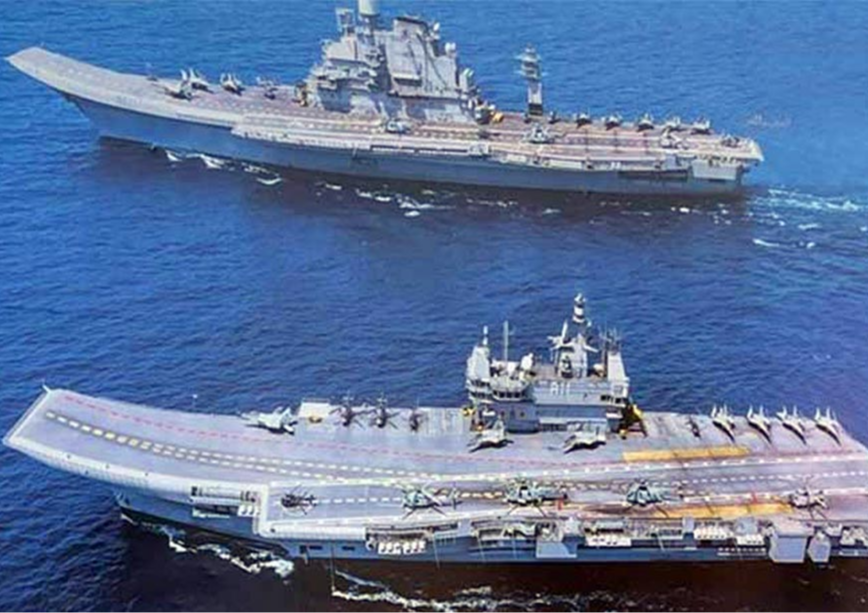-
CENTRES
Progammes & Centres
Location
A new naval base in Lakshadweep is a signal to partners and adversaries that India remains the preeminent power in the Eastern Indian Ocean

On 6 March, India commissioned INS Jatayu at Minicoy in the Lakshadweep group of islands. ‘Jatayu’ is the mythical creature in the epic Ramayana who tried to stop the abduction of Sita. In the words of Admiral Hari Kumar, Chief of the Naval Staff, who inaugurated the new base, “Jatayu was the ‘first responder’, trying to stop the abduction of Sita ji, even to the peril of his own life, exemplifying service before self.” It is an apt recognition of the “spirit of providing security surveillance and selfless service,” he noted in his inaugural speech.
With growing pirate activity in the Gulf of Aden and Arabian Sea and Houthi attacks in the Red Sea, the IN has moved to upgrade the existing facility on the island into a full-fledged base.
The event marks a pivotal moment for the Indian Navy (IN), which seeks to burnish its credentials as the premier security provider in the Indian Ocean. Sitting astride major shipping lanes in the Indian Ocean—including the nine-degree channel, a critical shipping passage—Minicoy already has a naval detachment. With growing pirate activity in the Gulf of Aden and Arabian Sea and Houthi attacks in the Red Sea, the IN has moved to upgrade the existing facility on the island into a full-fledged base. The navy’s operations planners believe a surveillance outpost in Minicoy will help track illicit activity in the littoral and also keep an eye out for threats such as marine pollution and illegal fishing.
Jatayu, however, is more than about maintaining vigil at sea. The base is aimed at boosting the Indian Navy's operational reach, enabling faster deployment of forces, and maintaining a strategic presence. Reportedly, there are plans to turn the naval facility at Minicoy into a nodal point for logistics and support operations in the Arabian Sea and beyond. Incidentally, Jatayu is the second naval base in Lakshadweep after INS Dweeprakshak on Kavaratti island. At a time of growing threats to shipping, a new base at Minicoy offers the Indian Navy a useful forward outpost in a critical sea space.
The new base sends a clear message to India’s neighbours that the Indian Navy is capable of safeguarding India’s vital maritime interests. In particular, India’s security managers have been keeping a close eye on the Maldives. After Malé asked New Delhi to withdraw a contingent of Indian military personnel stationed in the island state, the IN has been wary about the prospect of a greater Chinese presence in the Arabian Sea. Last month, Malé’s move to allow Xiang Yang Hong 03, a Chinese research ship, to make a port call in the Maldives fanned further tensions with India. Maldives and China have also signed a defence cooperation pact that offers free Chinese military assistance to Malé. To many in New Delhi, Malé’s outreach to Beijing appears intended to spite India and subvert Indian authority and influence in its own backyard.
After Malé asked New Delhi to withdraw a contingent of Indian military personnel stationed in the island state, the IN has been wary about the prospect of a greater Chinese presence in the Arabian Sea.
To be sure, there is more than a strategic dimension to the commissioning of Jatayu. India is keen to build capacity and foster development in the region. The inauguration of the new base could result in considerable infrastructure growth, potentially enhancing communications, logistics, and support facilities to benefit local communities. By some accounts, Jatayu has the potential to spur local economic growth, create jobs, and increase demand for local goods and services. India’s naval planners are keen to incorporate environmental sustainability into their infrastructure development plans for the new base.
New Delhi’s security moves in Lakshadweep are motivated by some other considerations. Recently, the Maldives National Defence Force seized an Indian fishing boat in the Maldivian EEZs, the second time in recent months that Indian fishermen have been apprehended for illegal entry into Maldivian waters. While it is not unusual for Indian fishermen to stray into the seas of neighbouring states in search of fish, Malé has been overly sensitive to incursions by foreign fishing boats and coast guards into its EEZs.
Nonetheless, the key factor driving India’s moves in Lakshadweep seems largely geopolitical. With Mohamed Muizzu, the Maldivian President, adopting a markedly pro-China tilt, New Delhi’s patience has been running thin. Malé's recent anti-India moves have left Indian decision-makers with little doubt that the Muizzu administration is intent on recalibrating the relationship with India to favour China, a denouement unacceptable to New Delhi.
The inauguration of the new base could result in considerable infrastructure growth, potentially enhancing communications, logistics, and support facilities to benefit local communities.
Even so, the decision to commission a naval base on Minicoy, merely 125 km from the Maldives’ northernmost atoll, appears less than carefully considered. For one thing, it upends a long-held consensus in India's foreign policy establishment that New Delhi should refrain from excessively militarising its island territories, as it could unnerve India's neighbours. That notion is no longer in vogue. With New Delhi seeking a more muscular presence in its maritime neighbourhood—driven chiefly by Chinese expansionism—the case for militarising island territories today appears stronger than ever. Yet, a full-fledged military facility in the Lakshadweep is likely to be complicated.
The problem for New Delhi isn’t constructing a military base at Minicoy; the challenge—as many maritime analysts will attest to—is maintaining and sustaining a forward operating base. Supporting a military base on an island 400 km from India’s mainland, where even fresh water is a scarce resource, is an onerous undertaking. Building an airfield with shelters for surveillance aircraft and fighter jets on a small island is difficult enough; creating associated infrastructure, like housing for personnel, storage facilities, and underground fuel dumps on a small island, complicates the task, not to mention the fragile ecology of Minicoy, which is sure to pose more obstacles.
Supporting a military base on an island 400 km from India’s mainland, where even fresh water is a scarce resource, is an onerous undertaking.
For the time being, the naval detachment at Minicoy has been formally elevated in status to a naval base. Strategic infrastructure on the island will be created in due course as necessary clearances are obtained. This is, arguably, a sensible way to set up an island outpost. If a naval base must be built at Minicoy, an incremental approach is the most practical and cost-effective way forward. It bears mentioning that Jatayu’s tactical advantages are indisputable. It is sure to facilitate surveillance in the littoral and also create opportunities for collaboration with like-minded partners. Whether or not it is maintainable and productive in the long run remains to be seen.
Abhijit Singh is a Senior Fellow at the Observer Research Foundation
The views expressed above belong to the author(s). ORF research and analyses now available on Telegram! Click here to access our curated content — blogs, longforms and interviews.

A former naval officer Abhijit Singh Visiting Fellow at ORF. A maritime professional with specialist and command experience in front-line Indian naval ships he has been ...
Read More +